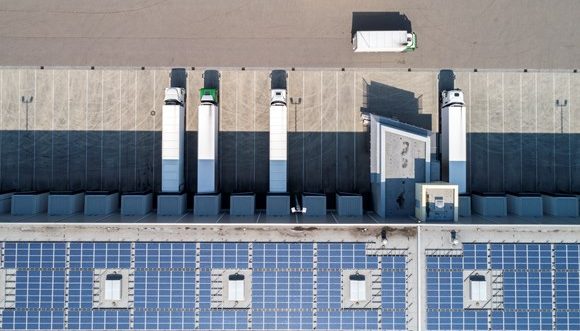Energy Networks Association (ENA) has published its first integrated Innovation Strategy, delivering an innovation roadmap for the next generation of gas and electricity network innovation projects which will deliver for consumers across the energy system.
As the UK seeks to build on the momentum from COP26 and deliver a Net Zero economy, the role that electricity innovation will play in supporting decarbonised gas and electricity technologies is set out by ENA in its first whole systems Energy Networks Innovation Strategy.
The document has been developed following an extensive programme of industry and stakeholder engagement, making sure that the views of the entire industry and beyond are reflected in the shared principles, themes and strategic direction for the next phase innovation projects to be commissioned.
In fact, data from ENA’s Innovation Strategy shows that since 2009, network companies have trialed and tested over 2,000 innovative ideas. Between 2020 – 2021, a staggering 95% of innovation projects included multiple network companies, with 88% involving working with third party organisations highlighting the collaborative approach taken by the energy networks.
ENA, working with engagement specialists Regen, held a wide-reaching public consultation and a series of in-depth workshops where around 350 people told network operators that the six key principles to ensure customer benefits and a wider positive impact should be:
Carbon impact – ensuring that all innovation projects have a positive impact towards the UK’s Net Zero emissions target, and carbon impact is considered for the duration of projects.
Collaboration & stakeholder engagement – placing collaboration at the heart of network innovation, providing shared learning between network companies and the industry.
Consumer benefit – making sure network innovation benefits customers financially and supporting a just transition.
Data and knowledge sharing – sharing our expertise with the industry in a transparent and accessible way.
Implementation and deployment – delivering successful network innovation into business as usual.
Innovation culture – embracing innovation throughout businesses and organisation to deliver transformative change.
The innovation landscape and industry priorities have changed dramatically since ENA’s innovation strategies were published two years ago, with funding streams and mechanisms changing, clearer working partnerships and heightened ambition around reaching Net Zero. Delivering a fully integrated Innovation Strategy will help the UK incorporate new technologies and practices into our gas and electricity networks.
With the Gas Distribution and Electricity Transmission networks into the next price control, and the Distribution Networks looking ahead to 2023 for RIIO-ED2, this innovation strategy will set the direction for an exciting new generation of network innovation projects.
Commenting on the announcement, Dan Clarke, Head of Innovation at Energy Networks Association, which represents the UK and Ireland’s energy network companies, said:
“We’re excited to launch our first integrated whole systems Innovation Strategy and to bring our electricity and gas networks closer together to deliver the innovations needed to deliver Net Zero.
“We’ve worked extremely closely across a number of industries to deliver a roadmap for the next generation of innovation projects and consulted with hundreds of people from across the energy industry and beyond to deliver a strategy that is coordinated and focused on the key priorities facing our energy system, whilst delivering benefits for customers.”
Grace Millman, energy analyst at Regen, added:
“Working with ENA on a single, joint electricity and gas network innovation strategy has been a great opportunity to ensure vital investment in network innovation is focused on accelerating the journey to net zero. Our aim has been to enable a wide range of organisations and communities to engage in energy network innovation by setting out clear strategic themes and information on how to get involved.”



























